-
 Bitcoin
Bitcoin $106,782.3966
-0.72% -
 Ethereum
Ethereum $2,406.7764
-1.16% -
 Tether USDt
Tether USDt $1.0005
0.02% -
 XRP
XRP $2.0918
-1.53% -
 BNB
BNB $644.5785
-0.17% -
 Solana
Solana $141.0925
-0.69% -
 USDC
USDC $1.0000
0.02% -
 TRON
TRON $0.2721
0.18% -
 Dogecoin
Dogecoin $0.1585
-1.26% -
 Cardano
Cardano $0.5497
-1.14% -
 Hyperliquid
Hyperliquid $35.8493
-1.58% -
 Bitcoin Cash
Bitcoin Cash $502.3089
2.20% -
 Sui
Sui $2.7092
3.87% -
 Chainlink
Chainlink $12.8551
-1.85% -
 UNUS SED LEO
UNUS SED LEO $9.0548
0.53% -
 Stellar
Stellar $0.2344
-0.85% -
 Avalanche
Avalanche $17.2676
-0.23% -
 Toncoin
Toncoin $2.8282
0.56% -
 Shiba Inu
Shiba Inu $0.0...01113
-1.14% -
 Litecoin
Litecoin $83.9593
-0.93% -
 Hedera
Hedera $0.1447
0.82% -
 Monero
Monero $306.9022
-2.07% -
 Bitget Token
Bitget Token $4.6358
3.42% -
 Dai
Dai $0.9999
0.01% -
 Ethena USDe
Ethena USDe $1.0001
0.02% -
 Polkadot
Polkadot $3.3211
0.06% -
 Uniswap
Uniswap $6.8775
0.75% -
 Pi
Pi $0.5664
-0.27% -
 Aave
Aave $256.0055
1.28% -
 Pepe
Pepe $0.0...09013
-3.24%
How does asymmetric encryption ensure the security of blockchain accounts?
Asymmetric encryption secures blockchain accounts by protecting private keys and enabling secure transactions through digital signatures and encrypted communication.
Apr 06, 2025 at 07:50 am
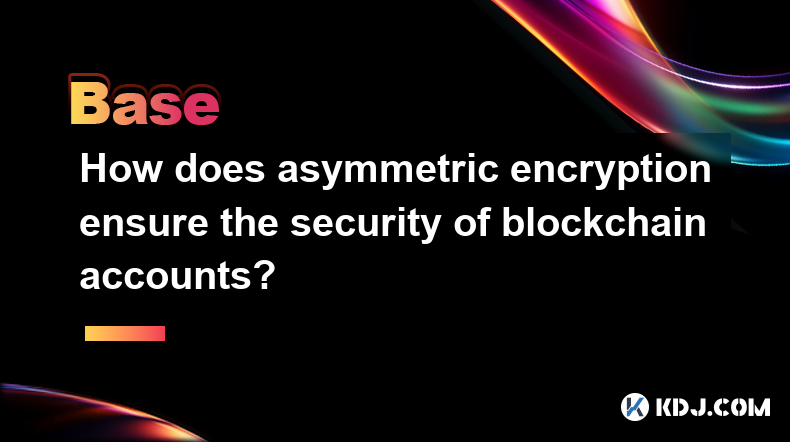
Asymmetric encryption plays a critical role in securing blockchain accounts by providing a robust method of safeguarding private keys and ensuring secure transactions. This article delves into how asymmetric encryption works and why it is indispensable for the security of blockchain accounts.
What is Asymmetric Encryption?
Asymmetric encryption, also known as public-key cryptography, involves the use of two mathematically related keys: a public key and a private key. The public key can be shared with anyone, while the private key must be kept secret. This system allows for secure communication and verification without the need for both parties to have prior knowledge of each other's keys.
In the context of blockchain, asymmetric encryption is used to create and manage digital signatures, which are crucial for verifying the authenticity and integrity of transactions. When a user wants to perform a transaction, they use their private key to sign it. The corresponding public key, which is part of the user's blockchain address, can then be used by anyone to verify the signature.
How Asymmetric Encryption Protects Blockchain Accounts
The primary way asymmetric encryption ensures the security of blockchain accounts is through the protection of private keys. Only the owner of the private key can create valid digital signatures for transactions associated with their account. If someone else tries to forge a transaction, they would need the private key to sign it, which is nearly impossible to obtain without the owner's consent.
Moreover, asymmetric encryption enables secure communication between nodes on the blockchain network. When a node wants to send a message or a transaction to another node, it can encrypt the message using the recipient's public key. Only the recipient, who possesses the corresponding private key, can decrypt and read the message. This ensures that sensitive information remains confidential and secure.
The Role of Digital Signatures in Blockchain Security
Digital signatures are an essential application of asymmetric encryption in blockchain technology. They provide a way to verify the authenticity and integrity of transactions. When a user signs a transaction with their private key, they create a digital signature that can be verified using their public key. This process ensures that the transaction has not been tampered with and that it indeed originates from the owner of the private key.
To understand how digital signatures work, consider the following steps:
- Create a Transaction: The user prepares the transaction details, such as the recipient's address and the amount to be transferred.
- Hash the Transaction: The transaction details are hashed using a cryptographic hash function, resulting in a fixed-size hash value.
- Sign the Hash: The user signs the hash value with their private key, creating a digital signature.
- Verify the Signature: Anyone on the network can use the user's public key to verify the digital signature. If the signature is valid, it confirms that the transaction has not been altered and that it was signed by the owner of the private key.
Protecting Private Keys
The security of a blockchain account heavily depends on the protection of the private key. If the private key is compromised, an attacker could access the account and perform unauthorized transactions. Therefore, it is crucial for users to store their private keys securely.
There are several methods to protect private keys:
- Hardware Wallets: These are physical devices designed to store private keys securely offline. They are immune to online attacks and provide an additional layer of security.
- Software Wallets with Encryption: Some software wallets encrypt the private key with a password. This adds an extra layer of protection, as the private key cannot be accessed without the correct password.
- Paper Wallets: A paper wallet involves printing the private key and storing it in a physically secure location. This method is resistant to hacking but vulnerable to physical theft or damage.
Asymmetric Encryption and Blockchain Address Generation
Blockchain addresses are generated from public keys using a one-way cryptographic function. This means that it is computationally infeasible to derive the public key (and subsequently the private key) from the blockchain address. This one-way nature of the function adds another layer of security to blockchain accounts.
To generate a blockchain address, the following steps are typically followed:
- Generate a Private Key: A random number is generated, which serves as the private key.
- Derive the Public Key: The private key is used to generate the corresponding public key using an elliptic curve multiplication.
- Create the Blockchain Address: The public key is hashed and further processed to create the blockchain address, which can be shared publicly.
Asymmetric Encryption in Transaction Verification
Transaction verification is another critical area where asymmetric encryption ensures the security of blockchain accounts. When a transaction is broadcast to the network, nodes verify its validity by checking the digital signature. If the signature is valid, the transaction is considered authentic and can be included in a block.
The verification process involves the following steps:
- Retrieve the Public Key: The node retrieves the public key associated with the sender's blockchain address.
- Verify the Digital Signature: The node uses the public key to verify the digital signature attached to the transaction. If the signature is valid, it confirms that the transaction was signed by the owner of the private key.
- Check Transaction Details: The node also checks the transaction details, such as the sender's balance and the validity of the recipient's address, to ensure that the transaction is legitimate.
Frequently Asked Questions
Q: Can asymmetric encryption be used to encrypt the entire blockchain?
A: No, asymmetric encryption is not typically used to encrypt the entire blockchain. Instead, it is used to secure individual transactions and protect private keys. The blockchain itself is secured through other cryptographic methods, such as hash functions and consensus algorithms.
Q: What happens if a private key is lost?
A: If a private key is lost, the user loses access to their blockchain account and any funds associated with it. There is no way to recover a lost private key, which underscores the importance of securely backing up private keys.
Q: Is it possible to change the public key associated with a blockchain address?
A: No, the public key associated with a blockchain address cannot be changed. Once a blockchain address is generated from a public key, it remains fixed. If a user wants to use a different public key, they must generate a new blockchain address.
Q: How does asymmetric encryption protect against man-in-the-middle attacks?
A: Asymmetric encryption protects against man-in-the-middle attacks by ensuring that only the intended recipient, who possesses the corresponding private key, can decrypt the message. Even if an attacker intercepts the encrypted message, they cannot decrypt it without the private key, thus preventing unauthorized access to the communication.
Disclaimer:info@kdj.com
The information provided is not trading advice. kdj.com does not assume any responsibility for any investments made based on the information provided in this article. Cryptocurrencies are highly volatile and it is highly recommended that you invest with caution after thorough research!
If you believe that the content used on this website infringes your copyright, please contact us immediately (info@kdj.com) and we will delete it promptly.
- Smart Investors Navigate the AI Token Frenzy: Bitcoin Switch and Beyond
- 2025-06-28 12:30:12
- Crypto in 2025: How Web3 AI is Poised to Dominate
- 2025-06-28 12:30:12
- Solana's Support Level Holds as MACD Crossover Hints at Potential Bullish Reversal
- 2025-06-28 12:50:12
- Altcoin Growth Hacking: Is MAGACOIN FINANCE Your Early Entry Ticket?
- 2025-06-28 13:10:12
- Crypto, Invest, July: What's Hot in the Digital Coin World?
- 2025-06-28 13:30:12
- Anchorage, Stablecoins, and Delistings: A New York Minute on Crypto Drama
- 2025-06-28 13:30:12
Related knowledge
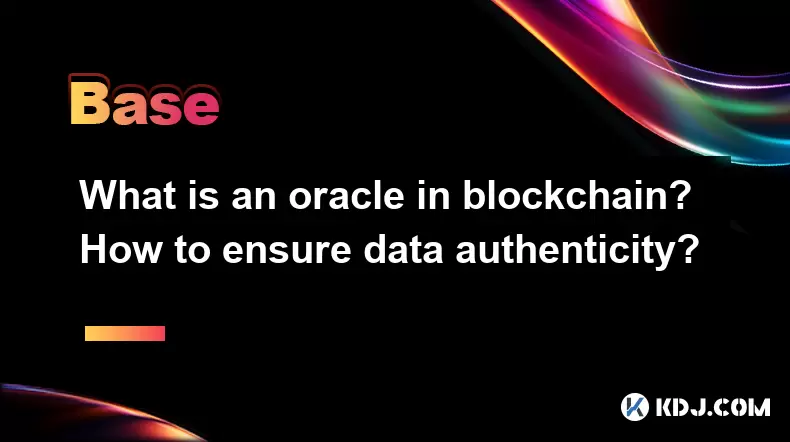
What is an oracle in blockchain? How to ensure data authenticity?
Jun 19,2025 at 08:49pm
Understanding the Role of an Oracle in BlockchainIn the context of blockchain technology, an oracle serves as a bridge between the blockchain and external data sources. While blockchains are inherently secure and decentralized, they cannot access real-world information on their own. Oracles enable smart contracts to interact with off-chain data such as ...

What are ICOs and IDOs in cryptocurrency? How to identify high-quality projects?
Jun 22,2025 at 11:49am
Understanding ICOs in CryptocurrencyInitial Coin Offerings (ICOs) are fundraising mechanisms used by cryptocurrency startups to raise capital for their projects. In an ICO, a company creates and sells its own tokens to investors in exchange for established cryptocurrencies like Bitcoin or Ethereum. The process typically involves the release of a whitepa...
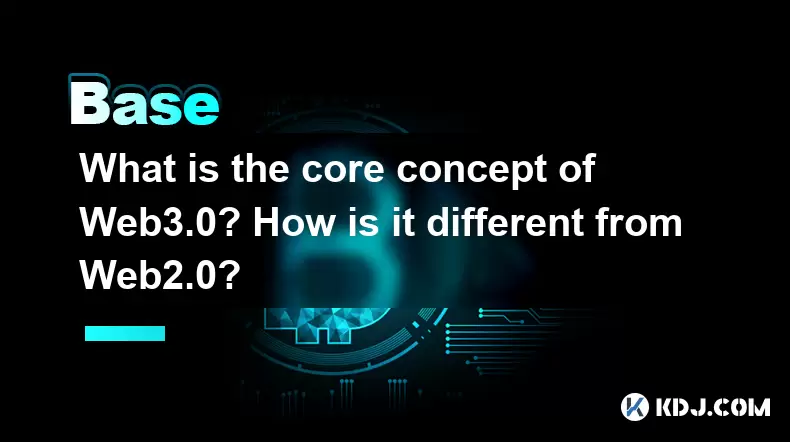
What is the core concept of Web3.0? How is it different from Web2.0?
Jun 21,2025 at 05:56pm
Decentralization as the Foundation of Web3.0The core concept of Web3.0 revolves around decentralization, which fundamentally challenges the centralized architecture of Web2.0. In Web3.0, control and ownership are distributed across a network rather than being held by a central authority or corporation. This is achieved primarily through blockchain techn...
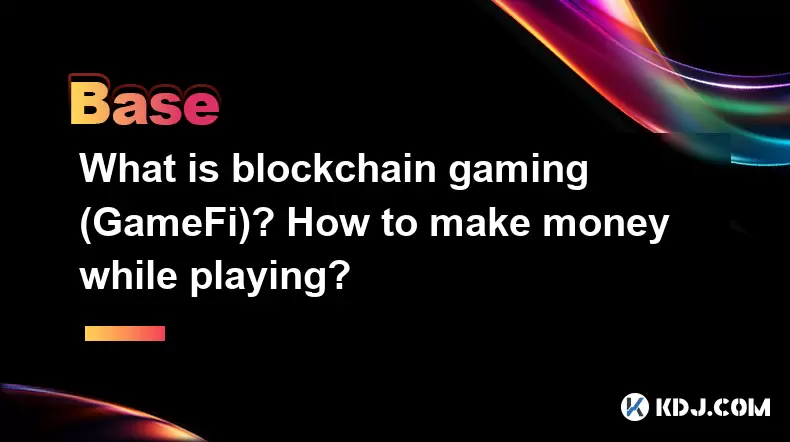
What is blockchain gaming (GameFi)? How to make money while playing?
Jun 20,2025 at 07:56am
Understanding Blockchain Gaming (GameFi)Blockchain gaming, often referred to as GameFi, is a fusion of blockchain technology and video games. It enables players to own in-game assets through non-fungible tokens (NFTs) and earn rewards via cryptocurrencies or token-based systems. Unlike traditional games where items are controlled by centralized develope...
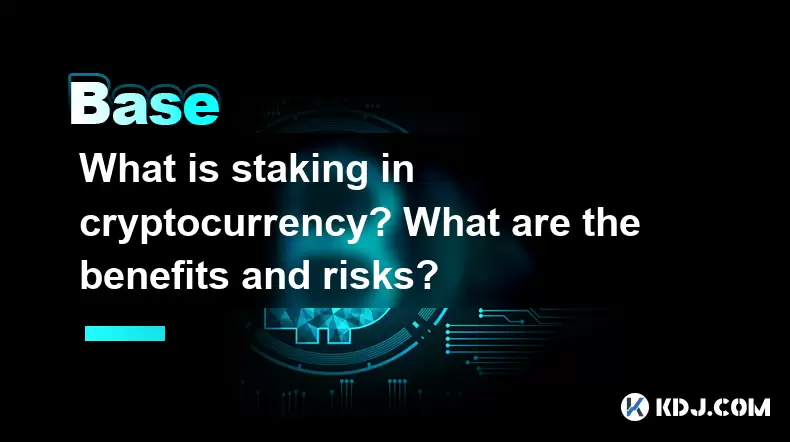
What is staking in cryptocurrency? What are the benefits and risks?
Jun 22,2025 at 10:01am
Understanding the Concept of Staking in CryptocurrencyStaking in cryptocurrency refers to the process of actively participating in transaction validation on a blockchain network that uses a Proof-of-Stake (PoS) consensus mechanism. Instead of miners competing to solve complex mathematical puzzles as in Proof-of-Work systems like Bitcoin, PoS blockchains...

How does the Lightning Network solve Bitcoin congestion? What is the usage process?
Jun 23,2025 at 06:21pm
Understanding Bitcoin Network CongestionBitcoin, as a decentralized digital currency, operates on a blockchain that records every transaction in a public ledger. Each block has a limited size, typically 1 megabyte, which allows for only a certain number of transactions per second (TPS). When the number of transactions increases, the network becomes cong...

What is an oracle in blockchain? How to ensure data authenticity?
Jun 19,2025 at 08:49pm
Understanding the Role of an Oracle in BlockchainIn the context of blockchain technology, an oracle serves as a bridge between the blockchain and external data sources. While blockchains are inherently secure and decentralized, they cannot access real-world information on their own. Oracles enable smart contracts to interact with off-chain data such as ...

What are ICOs and IDOs in cryptocurrency? How to identify high-quality projects?
Jun 22,2025 at 11:49am
Understanding ICOs in CryptocurrencyInitial Coin Offerings (ICOs) are fundraising mechanisms used by cryptocurrency startups to raise capital for their projects. In an ICO, a company creates and sells its own tokens to investors in exchange for established cryptocurrencies like Bitcoin or Ethereum. The process typically involves the release of a whitepa...

What is the core concept of Web3.0? How is it different from Web2.0?
Jun 21,2025 at 05:56pm
Decentralization as the Foundation of Web3.0The core concept of Web3.0 revolves around decentralization, which fundamentally challenges the centralized architecture of Web2.0. In Web3.0, control and ownership are distributed across a network rather than being held by a central authority or corporation. This is achieved primarily through blockchain techn...

What is blockchain gaming (GameFi)? How to make money while playing?
Jun 20,2025 at 07:56am
Understanding Blockchain Gaming (GameFi)Blockchain gaming, often referred to as GameFi, is a fusion of blockchain technology and video games. It enables players to own in-game assets through non-fungible tokens (NFTs) and earn rewards via cryptocurrencies or token-based systems. Unlike traditional games where items are controlled by centralized develope...

What is staking in cryptocurrency? What are the benefits and risks?
Jun 22,2025 at 10:01am
Understanding the Concept of Staking in CryptocurrencyStaking in cryptocurrency refers to the process of actively participating in transaction validation on a blockchain network that uses a Proof-of-Stake (PoS) consensus mechanism. Instead of miners competing to solve complex mathematical puzzles as in Proof-of-Work systems like Bitcoin, PoS blockchains...

How does the Lightning Network solve Bitcoin congestion? What is the usage process?
Jun 23,2025 at 06:21pm
Understanding Bitcoin Network CongestionBitcoin, as a decentralized digital currency, operates on a blockchain that records every transaction in a public ledger. Each block has a limited size, typically 1 megabyte, which allows for only a certain number of transactions per second (TPS). When the number of transactions increases, the network becomes cong...
See all articles


























































